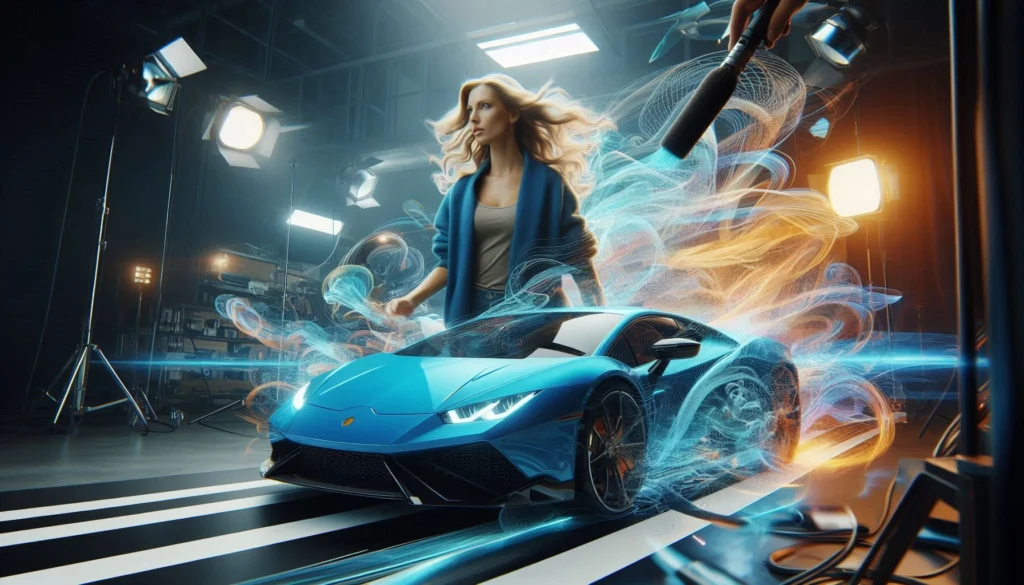Proven Interactive Motion Design for Web to Engage and Convertю Hey there, design aficionados! Today, we’re diving into a topic that’s more electrifying than a jolt of espresso on a Monday morning—interactive motion design for the web. If you’re looking to captivate your audience and boost conversions, you’ve come to the right place. Buckle up as we explore how the magic of motion can turn your static website into a dynamic experience that engages and converts. Let’s rev up those engines and get into the nitty-gritty of web animation and beyond!

1. Web Animation: The Gateway to Engagement
Let’s kick things off with a fundamental question: why bother with web animation in the first place? Well, web animation is like the secret sauce that makes your website experience unforgettable. It’s not just about flashy visuals; it’s about enhancing user experience and engagement. With the right touch, web animation can guide users through your site, making their journey smoother and more enjoyable. Think of it as the warm-up act before the main event—the more engaging the animation, the more likely users are to stick around and explore.
2. Interactive Motion Design: Where Creativity Meets Functionality
Interactive motion design takes things up a notch by adding a layer of interaction. This isn’t just about making things move; it’s about making things move in response to user actions. Imagine a button that animates when hovered over or a navigation menu that expands smoothly with a click. This type of dynamic web element keeps users engaged and makes the experience feel more personalized. Interactive motion design isn’t just cool; it’s crucial for creating an intuitive and responsive user interface.
3. Motion Graphics for Web: Adding Flair to Function
Motion graphics for web are like the cherry on top of your design sundae. They’re not just there for aesthetics; they help in delivering your message more effectively. From animated infographics to engaging video backgrounds, motion graphics can bring your content to life. They can also help in breaking down complex information into digestible bits, making your site not only visually appealing but also more informative.
4. Dynamic Web Elements: Keeping Things Fresh
Dynamic web elements are the heartbeat of a lively website. These elements—such as animated icons or interactive sliders—add a layer of dynamism that keeps users engaged. The goal here is to make your website feel alive and responsive. When users see elements react to their actions, it creates a sense of interaction and excitement. It’s like having a conversation with your website rather than just browsing through it.
5. CSS Animations: The Art of Subtlety
CSS animations are a fantastic tool for creating smooth, subtle movements without the need for heavy JavaScript. They’re perfect for adding a touch of elegance to your design, like a gentle fade-in effect or a sleek hover transition. CSS animations are all about enhancing user experience with minimal resources, which means faster load times and a more seamless interaction.
6. JavaScript Animation: When You Need Extra Power
When CSS animations aren’t enough, it’s time to call in JavaScript animation. This is where you can get creative with more complex and interactive animations. JavaScript allows for more control and customization, making it ideal for animations that require user input or intricate timing. Think interactive maps or elaborate loading screens. It’s your go-to when you need that extra punch of interactivity and functionality.
7. Web Motion Effects: The Finishing Touch
Web motion effects are all about adding that extra bit of polish to your design. These effects can range from subtle motion blurs to full-scale parallax scrolling. They help in creating a more immersive experience by adding depth and movement to your site. Motion effects can guide users’ attention, highlight important content, or simply make the browsing experience more enjoyable.
8. Responsive Motion Design: Adapting to Every Screen
In today’s multi-device world, responsive motion design is a must. It ensures that your animations look great and function well on screens of all sizes. Whether it’s a desktop monitor or a smartphone, responsive motion design adapts to different devices, ensuring a consistent experience for all users. This is crucial for maintaining engagement and preventing frustration when users switch devices.
9. UI Animation: Enhancing User Interactions
UI animation is all about making the user interface more intuitive and engaging. It’s the little touches—like a button that shifts color when clicked or a menu that slides in smoothly—that make a big difference. UI animation helps in providing feedback and guiding users through their interactions, making your site not only more appealing but also easier to navigate.
10. Microinteractions: Small Details, Big Impact
Microinteractions are those tiny, delightful details that often go unnoticed but make a huge difference in user experience. These can be anything from a subtle bounce when a form is submitted to a gentle shake when an error occurs. Microinteractions help in providing feedback and adding a touch of personality to your site, making interactions feel more natural and enjoyable.
11. SVG Animation: Scaling with Style
SVG animation is a game-changer for web design. Unlike raster images, SVGs are scalable without losing quality, making them perfect for responsive designs. SVG animations allow for intricate and high-quality graphics that adapt seamlessly to any screen size. Plus, they’re lightweight, which means faster load times and smoother performance.
12. Parallax Scrolling: Adding Depth to Your Design
Parallax scrolling is like a magic trick for web design. It creates an illusion of depth by making background images move slower than foreground content as users scroll. This effect adds a layer of dynamism and immersion to your site, making the browsing experience feel more engaging and interactive. It’s like stepping into a 3D world every time you scroll down the page.
13. HTML5 Animations: Future-Proof Your Design
HTML5 animations are the backbone of modern web design. They offer a wide range of possibilities, from simple transitions to complex interactive elements. HTML5’s support for multimedia and advanced graphics makes it ideal for creating rich, engaging animations that work seamlessly across different browsers and devices.
14. Web Design Transitions: Smooth Moves
Web design transitions are all about making changes feel seamless. Whether it’s a page load or a content update, smooth transitions help in maintaining the flow and preventing jarring interruptions. Well-designed transitions can make your site feel more cohesive and polished, enhancing the overall user experience.
15. Scroll-triggered Animations: Engaging as You Move
Scroll-triggered animations activate as users scroll down the page, creating a sense of progression and discovery. These animations can reveal content, highlight important information, or add visual interest. By syncing animations with user actions, you can keep the experience engaging and dynamic throughout the browsing journey.
16. Animated Web Interfaces: Bringing Design to Life
Animated web interfaces are all about making your site’s elements come alive. From interactive buttons to animated sliders, these interfaces add a layer of interactivity and excitement. They help in guiding users, highlighting features, and making the overall experience more engaging and enjoyable.
17. Web Design Movement: Dynamic Visuals for Impact
Web design movement refers to the strategic use of animation and motion to create visual interest and guide user behavior. It’s about using movement to draw attention, emphasize content, and enhance the storytelling aspect of your design. Well-executed movement can make your site stand out and leave a lasting impression.
18. Front-end Animation: Crafting User Experiences
Front-end animation is the art of bringing your website’s user interface to life. It’s about creating animations that enhance usability, provide feedback, and make interactions more intuitive. Effective front-end animation can significantly improve the user experience, making your site more interactive and engaging.
19. Motion Design for UX: Enhancing User Experience
Motion design for UX focuses on using animation to improve the overall user experience. It’s about creating animations that guide users, provide feedback, and make interactions feel more natural. By integrating motion design into UX, you can create a more seamless and enjoyable experience for your users.
20. Interactive Graphics: Engaging Visuals that React
Interactive graphics are all about creating visuals that respond to user actions. Whether it’s a clickable infographic or an animated data visualization, interactive graphics add a layer of engagement and interactivity. They make your content more engaging and provide users with a more immersive experience.
And there you have it—a comprehensive look at how interactive motion design can elevate your web presence. From dynamic web elements to responsive motion design, these techniques are your toolkit for creating engaging, effective, and memorable web experiences. So, roll up your sleeves, get those creative juices flowing, and start transforming your static site into a motion masterpiece!
Mastering Interactive Motion Design: Proven Strategies for Web Success
Proven Interactive Web Design Strategies to Engage and Convert. Only a visually appealing website is no longer enough to capture and retain the attention of online visitors. To stand out in the competitive online landscape, your web design must be interactive and engaging.
Interactive web design not only keeps users on your site but also increases conversion rates. In this article, we’ll explore 20 proven interactive web design strategies with real-life examples to help you create a website that engages visitors and converts them into loyal customers.
Proven Interactive Web Design Strategies
Keep it simple
A simple layout for your homepage can make a positive impression on users. For example, the website of Apple has a simple and clean layout that is easy to navigate.
Mix up the layout
Use different layouts to keep the user engaged. For instance, the website of The New York Times uses a variety of layouts to present different types of content.
Use white space
White space can help to organize information and make it easier to read. The website of Spotify uses white space effectively to create a clean and modern look.
Choose colors strategically
Colors can evoke emotions and influence user behavior. The website of Airbnb uses a warm color palette to create a welcoming and inviting atmosphere.
Use clean, easy-to-read fonts
Fonts should be legible and easy on the eyes. The website Medium uses a simple font that is easy to read, making it an ideal choice for long-form content.
Make your site mobile-friendly
Make sure your website is optimized for mobile interface. Nowadays a lot of people use mobile phones to scroll your site. The website of CNN is optimized for mobile devices, making it easy for users to access news on the go.
Make it easy to navigate
Navigation should be intuitive and easy to use. The website of Amazon has a simple and intuitive navigation system that makes it easy for users to find what they are looking for.
Make your contact details easy to find
Users should be able to find your contact information easily. The website of Google has a “Contact Us” link at the bottom of the page, making it easy for users to get in touch.
Use animations and transitions
Animations and transitions can add visual interest and guide users through your site. The website of Stripe uses animations and transitions to create a seamless user experience.
Add interactive elements
Implementing interactive elements can increase engagement. For example Animation elements or motion effects in your site. The website of National Geographic Kids has interactive games that are both fun and educational.
Use video to interact with users
Video content can be more engaging than text or images alone. The website of TED Talks uses video content to share ideas and inspire people around the world.
Incorporate social media
Social media integration can help to increase user engagement and drive traffic to your site. The website of Hootsuite has social media buttons that allow users to share content easily.
Optimize for speed
Fast loading of your website is non-negotiable. You need to optimize optimize your Website very well. The website of Walmart loads quickly, making it easy for users to shop online.
Ensure accessibility
Your site should be accessible to all users, including those with disabilities. The website of the UK government (gov. uk) is designed with accessibility in mind, making it easy for everyone to access important information.
Test and iterate
Continuously test and iterate on your design to improve user experience. The website of Booking.com is constantly testing new designs and features to improve the user experience.
Get a responsive website with Interactive Web Design
We can create an interactive website for your needs. Contact us: logomotiongraphics@gmail.com
Interactive Web Design Summary
By implementing these interactive web design strategies and studying the examples provided, you can transform your website into a captivating and conversion-driven platform. Keep in mind that the key to success lies in choosing the strategies that align with your brand and audience.
Regularly analyze user behavior and gather feedback to fine-tune your interactive design elements and optimize the user experience continuously. In doing so, you’ll not only engage your visitors but also convert them into loyal customers who keep coming back for more. I hope these tips help you create an engaging website!



